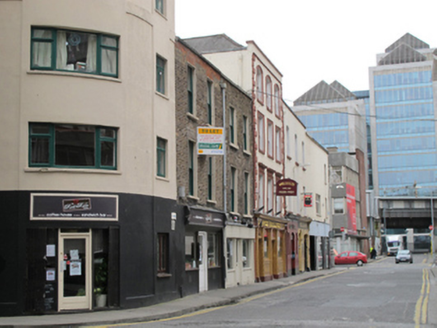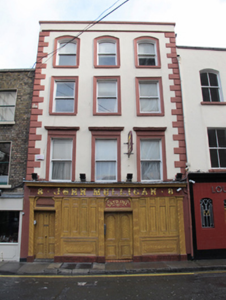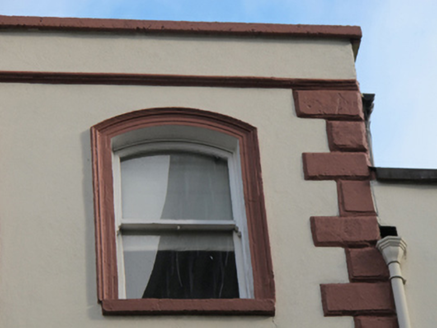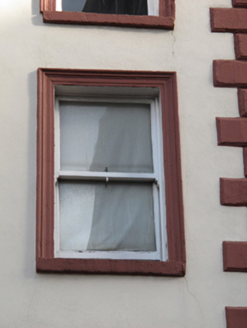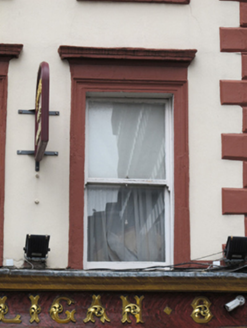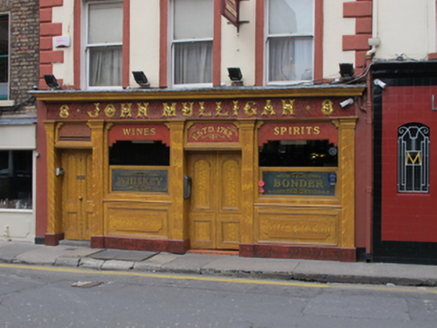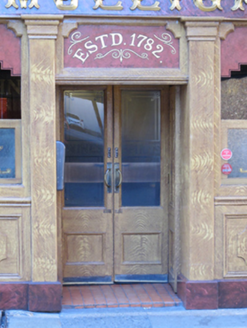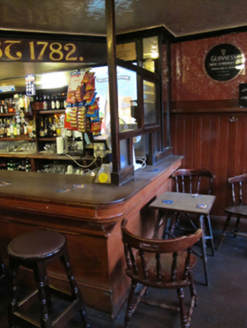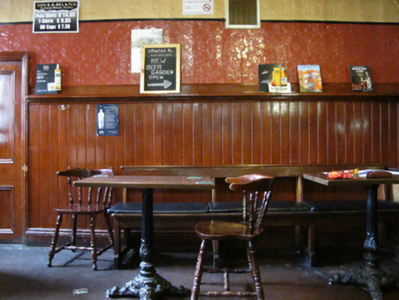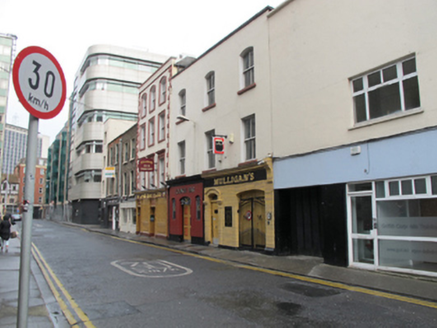Survey Data
Reg No
50020306
Rating
Regional
Categories of Special Interest
Architectural, Artistic, Cultural, Social
Original Use
Public house
In Use As
Public house
Date
1870 - 1890
Coordinates
316221, 234356
Date Recorded
28/03/2015
Date Updated
--/--/--
Description
Attached three-bay four-storey over basement public house, built c.1880, having shopfront to front (south) elevation. M-profile hipped slate roof set perpendicular to street, hidden behind rendered parapet having masonry coping, brick chimneystack with clay pots. Smooth rendered wall to front having masonry string course to parapet and masonry quoins. Segmental- and square-headed windows with render architraves and masonry sills, masonry entablature to first floor windows, having one-over-one pane timber sliding sash windows throughout. Carved timber shopfront comprising pilasters supporting fascia, with decorative lettering in high relief to fascia and lead flashing to cornice. Square-headed display windows over panelled timber riser, having carved timber spandrels, timber-framed display windows, removable panelled timber window shutters. Square-headed door openings with painted signs to overlights, double-leaf timber panelled doors. Double-leaf half-glazed timber panelled doors to interior. Carved and panelled timber interior having textured paper to walls and ceilings. Located to centre and north side of Poolbeg Street.
Appraisal
Poolbeg Street, named after a small pool or inlet on the south side of the River Liffey, was established on reclaimed land between Townsend Street and the present-day quays to the north. This parcel of ground was leased to Luke Gardiner in 1741, and it was he who initially developed houses and shops along this street. This building was a public house in the early nineteenth century, and John Mulligan, grocer, wine and spirit dealer became proprietor in 1853, having previously held premises on Thomas Street. It was rebuilt in the 1880s, with a lounge extending to its neighbouring building constructed c.1890. It has some cultural significance, having been the setting for a scene in James Joyce’s short story ‘Counterpart’s, which appears in Dubliners, published in 1914, and apparently its visitors included a young John F. Kennedy, who came here in 1945. The Victorian shopfront and interior are particularly notable, making a significant contribution to the heritage value and character of the building. Stucco detailing to the facade adds variety and interest to the streetscape.
